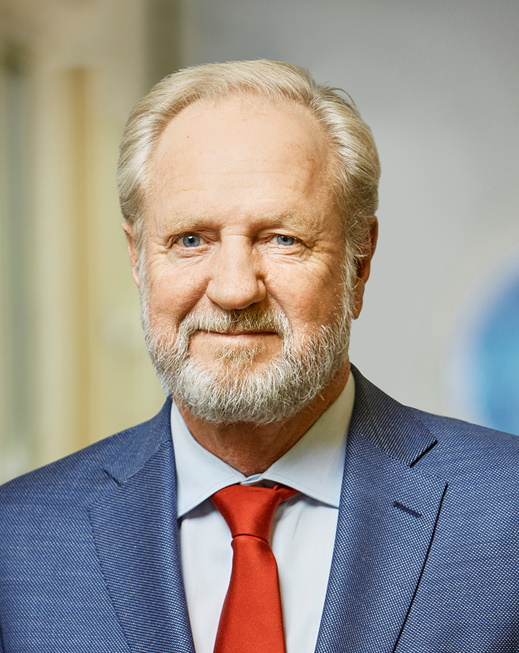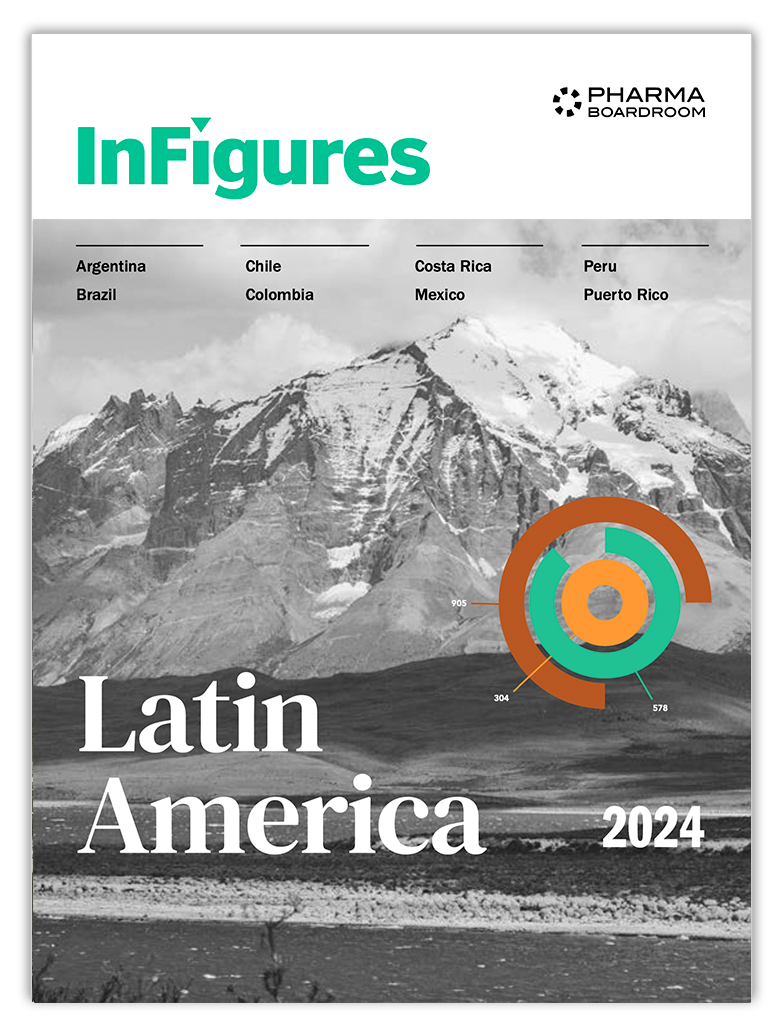Medivir is a Swedish biotech company focusing on the development and commercialization of innovative treatments for cancers of high unmet medical need. Last October, Dr Uli Hacksell was appointed CEO to reorganize the company in order to focus resources on the clinical development of Medivir’s projects. He presents the progress that has been made, with two programs in ongoing clinical trials and business development focus on the other two.
It has been almost a year since you became CEO of Medivir last October. What made you decide to take on this challenge?
The reason why I accepted this job was that I believed it was important to focus the resources of Medivir on clinical development and business development in order to create maximum shareholder value. At the beginning of its 30-year history, Medivir was primarily focused on research, collaborating with large pharma companies to develop its assets further. For instance, the company developed Olysio, a hepatitis C drug, in collaboration with Janssen which assumed the full responsibility for clinical development. The company also developed a product called Xerclear® (Zoviduo®) for the treatment of labial herpes and out-licensed marketing rights to Meda and GSK. My mission as CEO was to transform the structure of Medivir to a company laser-focused on clinical development and business development. As a result, we terminated all in-house preclinical research activities. In the process, we went from 75 full-time employees(FTEs) down to the current total of 14 FTEs. While it was a difficult process to have to let go of 60 employees, it was the right thing to do. A company like Medivir which does not yet generate profits has to be very careful about what it spends money on.
You have extensive experience in R&D management and executive leadership at biopharma companies in the US and Sweden. How does Sweden’s life sciences ecosystem compare to places like Boston and the San Francisco Bay Area?
Sweden’s biotech ecosystem has benefited from the merger between Astra and Zeneca and the acquisition of Pharmacia by Pfizer because many highly competent people became available for small innovative biotech companies. However, the problem is that, as these people get older, there is no longer a supply of talent with experience in clinical development. Nonetheless, we do have a supply of excellent scientists. In the past, close collaboration between industry and universities has been the cornerstone of the tremendous success of the Swedish pharmaceutical industry. About 80 percent of new drugs developed by Astra and Pharmacia emanated from research done at Swedish universities. Today, there is no longer such a large pharmaceutical company driving the ecosystem. The largest company headquartered in Sweden is SOBI but its size is not comparable to the late Astra and Pharmacia. As a result, there is no longer a company with enough resources to take on the discoveries from universities. Instead, smaller biotech companies are now filling this role. However, taking a new compound to the market costs at least one billion dollars while the amount of capital available for these smaller ventures is limited and incomparable to what is available in the US. Few American investors are willing to fund life sciences companies in Europe and in Sweden. More needs to be done to attract foreign capital.
How is Medivir trying to attract investment from abroad?
For a Swedish entrepreneur, it might be difficult to even get a meeting with an American investor. Thankfully, due to my long experience from the US biotechnology sector, I have a large network in the US, both with investors and banks.
The reason why American investors tend not to invest as readily in the European biotech sector is that they are worried they will not be able to have co-investors with deep pockets and a long-term investment strategy sharing the high risks and costs of clinical development.
What do you think should be done to increase the potential of Sweden as a global life sciences cluster?
Public investments have been made in research facilities such as the Science for Life Laboratory (SciLifeLab), one of the largest molecular biology research laboratories in Europe, as well as biomanufacturing capabilities like the Testa Center, a bioprocess pilot-scale facility set up as a collaboration between the government and GE and designed to help create a bridge between the research and industrial production of biopharmaceuticals.
However, there is a lack of sufficiently large funds available. If the government could invest more in life sciences start-ups, for instance through the Industrifonden, a government-backed fund to promote Swedish industry, it could be very helpful.
Your clinical pipeline currently consists of four proprietary compounds, three in oncology and one in osteoarthritis. Could you introduce our international readers to your R&D strategy?
As I mentioned, we have terminated preclinical research activities in order to concentrate on driving programs through clinical development. Two of them are now ready to enter Phase III and we are looking for partners while focusing our cash and personnel resources on developing the other two clinical programs.
One ongoing program is birinapant in combination with Keytruda® for colorectal cancer, currently in Phase II. In preclinical models, we have observed a synergistic effect when combining the two drugs. The Phase II study is conducted in collaboration with Merck Inc. which provides Keytruda®. However, Medivir owns all the rights to birinapant. If the results of the study are promising, I think many companies will be interested in partnering up in a formal way.
The other drug where we are currently conducting a clinical study is MIV-818, a potential oral treatment for patients with advanced liver cancers for whom existing treatment options provide a very low survival benefit. Liver cancer is the third leading cause of cancer-related deaths worldwide. The prevalence is especially high in Asia and China, in particular. MIV-818 is a liver-targeted nucleotide prodrug of troxacitabine, a molecule which has been shown to have a high level of anti-tumour activity. However, an intravenous formulation of troxacitabine failed to reach the market as it was too toxic. We have developed a prodrug which is taken orally, absorbed in the gut to the blood, and goes directly to the liver where it is metabolized into the active metabolite of troxacitabine which destroys cancer cells. In general, evaluated doses of MIV-818 have been shown to be well-tolerated by patients. The study enrols patients with advanced liver cancer. We perform liver biopsies of both cancer tissue and healthy tissue. An effect signal, measured as DNA damage, has been observed in liver biopsies from tumour tissue in MIV-818 treated patients. In contrast to the tumour, normal liver tissue does not appear to have been affected by the treatment.
In addition to these two programs, we have two programs ready for Phase III. The first is remetinostat formulated as a gel administered on skin lesions resulting from cutaneous T-cell lymphoma (CTCL), an orphan disease. CTCL is very different from other blood cancers and is characterized by a long initial stage of the disease during which only the skin is affected. Patients get lesions in the skin and serious itching which can last for many years. Although there are therapies available, they have side effects which prevent them from being taken chronically. Remetinostat, on the other hand, is essentially free of side effects and can thus be taken chronically. We are also conducting, in collaboration with Stanford University, a study with remetinostat in basal cell carcinoma (BCC), a much larger patient population. A couple of months ago, we reported interim results that were very promising, demonstrating a good safety profile and clinical effect. It is expensive to conduct a Phase III study in CTCL, about 45 million dollars. We are therefore currently looking for a partner who can help us conduct a Phase III study and market the drug after approval. As the US FDA has confirmed, one pivotal Phase III study meeting the clinical endpoints would be enough to receive marketing approval for remetinostat as a treatment against CTCL.
Finally, we have a program called MIV-711, a potential treatment for osteoarthritis (OA). In a completed 6 months Phase II study, this compound has shown that it can reduce the destruction of the bone and the cartilage in the joints. We have also seen initial indications of reduced pain. Today, there is no treatment for OA which can stop or slow disease progression. The therapies available only focus on pain management. MIV-711 has the potential to be the first disease-modifying treatment for OA. We believe that if we treat patients during a period longer than six months, we will not only be able to show a benefit on the joint structure, but also on the pain. We think MIV-711 has tremendous potential. As the world population ages, osteoarthritis will only grow as a burden on societies. We have recently completed Phase II studies and are looking for a partner to start Phase III because we cannot afford to conduct the study alone, as one Phase III study in OA may cost as much as USD 100 million.
Medivir recently presented results for its combination treatment with Keytruda® at the ASCO conference in Chicago. How was it received by the international life sciences community?
At ASCO, we presented long term data from the Phase I trial for our combination therapy with Keytruda® during which we studied patients with different kinds of solid tumours. In particular, one patient suffering from a specific type of colorectal cancer, microsatellite stable (MSS) colorectal cancer has been a partial responder to our combination therapy and has received treatment for over 80 weeks. This is an exciting development and the presentation focused on this specific case. The mere fact that we received a slot to present at ASCO shows the quality of our research and has garnered a lot of attention. The presentation was well-received by the community.
What key milestones would you like to achieve during your time as CEO?
First, we hope to find partners for both remetinostat and MIV-711. Then we will conclude the Phase I study for MIV-818 and the Phase II for birinapant in combination with Keytruda®. At the end of this year, we plan to conduct a futility analysis of the birinapant study on the first 14 patients.







